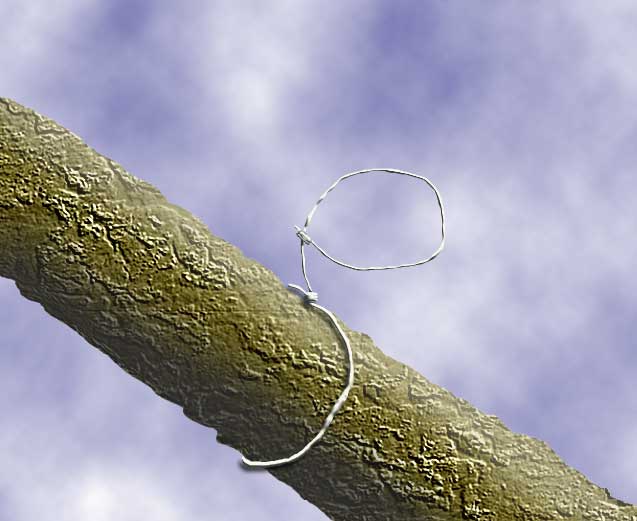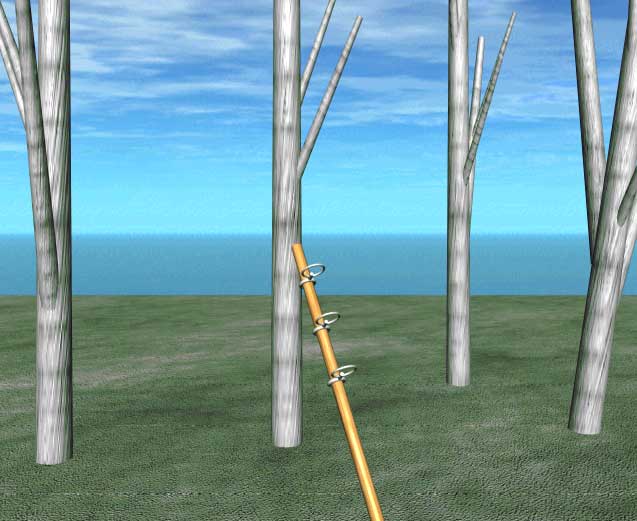
SQUIRREL SNARE
One of the most effective snare types I have used is great for nabbing squirrels. Don't scoff... they taste like chicken, and one good sized gray squirrel has about the meat content of a small game hen (a large meal for one). Whereas squirrels are so plentiful in North America, this seems to be the best quarry to fill ones belly.
The snare itself consists of a small noose loosely wrapped around a pole. I usually would set several (3 or 4) of these on each pole, which then get leaned against likely trees. I have drawn the snare with white wire here for visibility. I usually use green US military spec snare wire (available in many Army/Navy Supply catalogues and stores). The reason for using wire and not cord or string is that the wire noose kinks closed when pulled tight, whereas string will loosen if the tension is let off.

You see, like people, squirrels are inherently lazy creatures. Rather than running and hitting a tree at a 90 degree angle, if you set up a nice ramp at a 45 degree angle, they WILL use it. Choose some likely trees. Likely trees are those that have a lot of acorn husks underneath them indicating that squirrels feed there. Another place to set them is under trees where there is a visible squirrel nest.

Note that in this picture I have made the pole stand out, but only so that you can see it in the example. In reality I use a bark covered pole and green snare wire. As you can see from the example, I give the sucker about half the pole to get a running start before the first snare. A squirrel sees the snares as simply twigs. When a squirrel feels that noose close on his neck, he thinks it's something trying to grab him, and instinct makes him leap from the pole, thus hanging himself. That is why it's best to loosely wrap the wire around the pole. It allows the wire to pivot 180 degrees to hang the squirrel under the pole.
CLICK HERE TO RETURN TO PRIMITIVE HUNTING AND SNARING PAGE